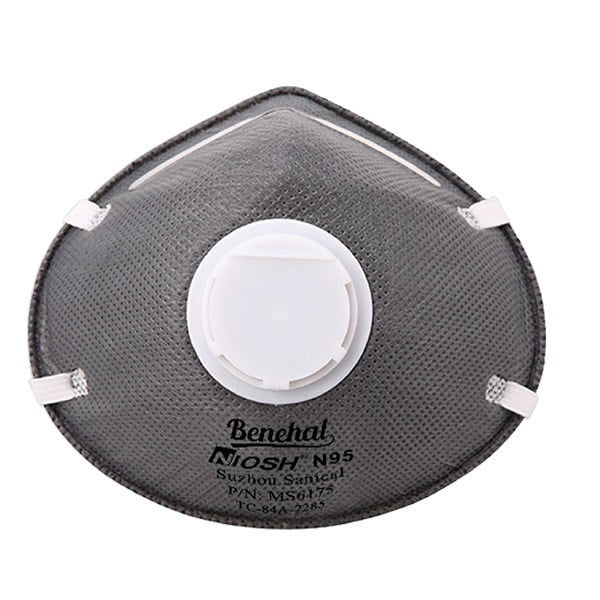Black N95 mask work just as well as a white one
When worn correctly (with an N95 mask that forms a tight seal around the users face), it protects from dangerous particulate matter in the air. A KN95 mask filters 95% of particles, as does the N95, says UCLA Medical Schools Shapiro. Commonly worn by healthcare workers and first responders, N95 respirators filter as much as 95 percent of droplets and particles in air, according to the CDC. N95 masks are not protective against gases, and vapors, or can’t be used on asbestos, nor can they deliver oxygen.
Black N95 mask is more fashionable and comfortable.
KN95 masks are designed to provide a protective effect that is closer to N95 respirators, which are regulated by CDCs National Institute of Occupational Safety and Health (NIOSH). KN95 masks are disposable facial covers, so you cannot wash them and re-use them the way you would with a cloth mask. If you cannot get a KN95 or N95 mask, you are advised to opt for one that has several layers, as well as a nasal cord that you can fold over the nose to keep the air from getting in. For your safety, you should use a N95 respirator if you are able to get one, or even consider doubling up on masks.
If you are willing to stretch the limits a bit, the CDCs guidelines for healthcare facilities say the same respirator mask should be worn for five times before throwing it away. The CDC says that healthcare workers can reuse the N95 mask up to five times before throwing it out. The CDC suggests making sure that it fully covers the mouth and nose, and fits securely over your face to prevent gaps around the sides of the mask, nose, and chin. While federal officials have said that any face covering is better than none, concerns are growing that one-layer fabric covers might not offer enough protection from the Omicron strain, leading regulators to consider new guidelines that would encourage Americans to wear more protective masks, like N95 or KN95 covers.
For the first time, the Centers for Disease Control and Prevention told Americans that respirators–including N95 and KN95 masks–offer better protection than cloth face masks, stopping short of explicitly recommending one mask over another. Last month, AP-NORC Poll found Black and Hispanic Americans, 69% and 49%, were more likely than White Americans, 35%, to say that Black and Hispanic Americans always or often wear face masks around others. For instance, 76% of Black Americans and 55% of Hispanic Americans said that most people wear a mask in public, in enclosed spaces, often is necessary for them to return to normal, compared with 38% of white Americans.
White Americans lower support for face mask mandates and other safety measures also likely reflects a lower level of sensitivity about what is happening in communities of color. As for perceived trust (or how you would consider yourself to be safe around someone at the time of COVID-19), Black masks beat out all the other options in the assessment by a small margin, while Whites came close behind.

